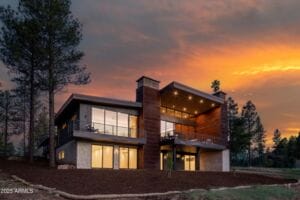Arizona tribes pursuing retail projects as economic engines as well as entertainment and shipping options for their members
With gaming and hospitality reaching closer to a saturation point, many Arizona tribes are choosing to invest in markets where traditional retail developers and lenders have shied away from during the current economy.
In Metro Phoenix, three tribes have major retail projects in the works:
- The Gila River Indian Community just signed a lease with the Simon Property Group for the Phoenix Premium Outlets adjacent to Wild Horse Pass Hotel & Casino in Chandler.
- The Ak-Chin Indian Community is building the 185,000 SF Ak-Chin Family Entertainment Complex in Maricopa.
- The Salt River Pima-Maricopa Indian Community is getting a Courtyard by Marriott in Scottsdale plus a possible Tanger Outlet Mall. “This (Phoenix Premium Outlets) development represents the next steps toward economic self sufficiency for our community,” says Gila River Gov. Gregory Mendoza. “It’s going to complement this area.”
The outlet, to be located off of I-10 and Wild Horse Pass Blvd., is expected to create 500 construction jobs and 800 to 1,000 full or part-time jobs, according to the tribe. The 360,000 SF center will include 90 high quality and name-brand stroes. It is scheduled to open in 2Q 2013.
Developers can find a real benefit to working with tribes on reservation land as development fees and lease rates can be very competitive and can be areas of high visibility and underserves areas, according to Kari McCormick, business development manager for Kitchell’s Native American Division.
“There are progressive tribes such as the Ak-Chin who recognized a need in the community in which their own members lived and worked and were underserved by the local market and realized they have the resources to fulfill a need within the community and complement their existing enterprises by adding the entertainment venue,” McCormick says.

The 185,000 SF, $35M-$40M Ak-Chin facility will consist of a 12-screen movie theater, 24-lane bowling center, arcade, laser tag arena, restaurant and concession area aong with 23,000 SF of retail and 45 acres of site work. A.R. Mays Construction is the general contractor and Nelsen Partners is the architect.
Retail outlets and entertainment venues are nothing new to tribes, but what they are seeing is “bigger, better, more diversified developments in Indian Country,” McCormick says.
“For many tribes the stand-alone C-stores and gas stations still remain very profitable enterprises, but tribes are seeking ways to create destination sites and expanding their customer base in a competitive market,” she says. “Although each tribe has very different reasons for getting into the retail market, usually it is a variety of reasons that leads them to take the plunge to diversify as their gaming market becomes more saturated.”
Some of the most important reasons for diversification include:
- Expand their existing market base — increasing the foot traffic to the existing gaming facility, especially if it is focused on a client base they may not otherwise draw to their gaming facility.
- Expand services for their existing client base, lengthening the “stay and play” for an existing customer. It is the theory of “something for everyone” where a couple goes to a casino, and only one of the partners enjoys gambling; that individual is more inclined to stay longer and play more if they know their significant other has separate activities to keep them happy.
- Create a greater market for their gaming property by creating a complementary draw — especially if it is high recognition brands or unique brands not located everywhere.
- Create an economic driver for tax revenues
- Create jobs for the tribal members
- Create opportunities for tribal entrepreneurs
- Provide a local service for tribal members and local community (buy local/buy Indian)
Just as with any successful retail development location, visibility, access and parking require careful consideration. McCormick adds. An added consideration for retail development for tribes is ay new development must complement and create spillover to the existing gaming facility. In the end, the key to success in any retail development is that it increases foot traffic, but does not detract or disrupt the existing gaming enterprise.
“Kitchell recognizes the importance of tribal sovereignty, workforce development within the community and honoring the unique culture of each tribe,” McCormick says. “Tribes have become one of the leading investors helping to stimulate the economy in our state with developments that are creating jobs.
“We are very proud and honored to be a part of the exciting growth and construction opportunities that we are seeing. We believe that the impact tribes will have within our state and nationally will be unprecedented, as they seek to diversify and expand their existing enterprises.”



